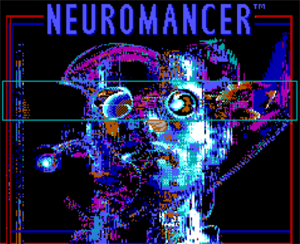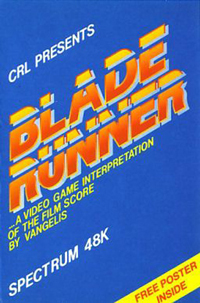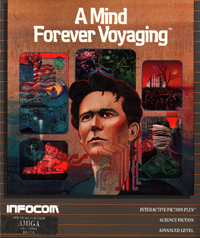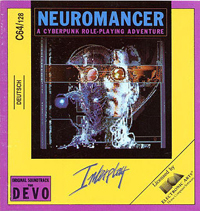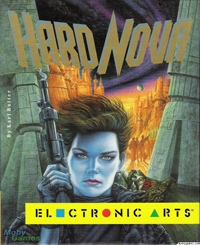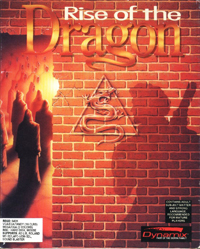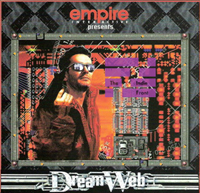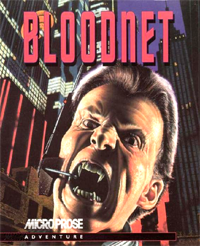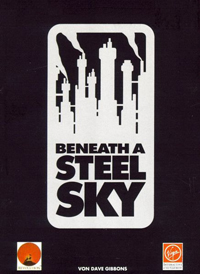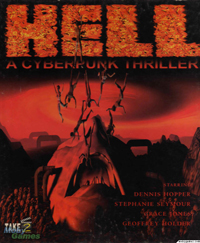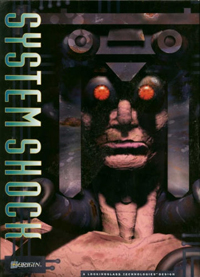Top Ten: Retro Cyberpunk Games
|
The genre of sci-fi, cyberpunk, became popular during the 1980s. From literature, comic books, movies, and TV shows, the influence of the genre could be seen in many aspects of popular culture. And as alongside we saw the rise of home computing, and the dawn to the technological age, cyberpunk was a perfect genre to be turned in computer games.
Before William Gibson's seminal cyberpunk novel Neuromancer in 1984, himself and other writers had developed the genre in sci-fi short-stories. The term was coined by Bruce Bethke in 1980, in a short-story "Cyberpunk," which was published in the November 1983 issue of Amazing Science Fiction Stories. The term quickly became used to describe genre writers like Gardner Dozois, Bruce Sterling and William Gibson. |
As a genre style cyberpunk is usually set in a dystopian high-tech and low-rent future. Often featuring misfits, rebels, low-lifes and the odd hard-boiled detective. The 1982 movie Blade Runner can be seen as a quintessential example of the cyberpunk style and theme. Often in cyberpunk, action would take place online, in cyberspace. A term adopted for the Internet, as it began to become ubiquitous in the late 90s. Alnongside the movies, literature and the spread of computers into many homes, some classic cyberpunk games were released.
|
Blade Runner (1985): One of the earliest games to be released that had a cyberpunk theme, based not on the movie, but on the Vangelis soundtrack for Blade Runner. The game-makers couldn't get the rights to a movie tie-in game, and hence why the game is claimed to be based on the soundtrack. Released on popular formats of the time, the Commodore 64, ZX Spectrum and Amstrad CPC. The plot of the game is similar to the movie. Replidroids (sic for replicants), designed for use in space, have been banned from Earth following a revolt on a colony. The role of eliminating any "replidroids" found on earth is given to a unit of bounty hunters. Because of the licensing of the game, upon loading players were treated to a tinny replication of a segment of the soundtrack. Unfortunately the game itself was quite crude graphically, with Sinclair User calling the game pretentious and the graphics plodding. As beneath it all, the game was basically a side-scrolling shoot-em-up. Fans of the movie and reviewers panned the game, that in essence only nodded to the original movie. In 1997 Virgin Interactive released a point-and-click PC adventure game based on the movie, that was much better received. Many considered the highly atmospheric, and to have captured the sense and feel of the cyberpunk setting of the 1982 movie.
|
|
A Mind Forever Voyaging (1985): An interactive fiction game, released on the Commodore 128 and Amiga, the Atari ST, as well as PC and Apple formats. In the game, the player controls PRISM, the world's first sentient computer, in the year 2031. However until PRISM's "father" tells the truth of his existence, PRISM is unaware he is a computer, as he's been living in a simulation. The United States is in disarray, and youths are turning to "Joybooths", committing suicide by over use. There's a constant nuclear threat, and in amongst this it's PRISM's mission to run a simulation of the Plan for Renewed National Purpose. The game was a political and social commentary of Reagan era America. Author Steve Meretzky noted that he had hoped for some controversy with the political content. When the game generated no uproar, he "decided to write something with a little bit of sex in it, because nothing generates controversy like sex". The resulting game with was Leather Goddesses of Phobos (1986).
|
|
Neuromancer (1988): An adventure game based on William Gibson's seminal 1984 novel of the same name, the game takes place in both the "real world" and the extensively realized and detailed world of cyberspace. The game was developed by Interplay, and was released on the Commodore 64, Amiga, PC and Apple formats. The game is loosely based on the events of the novel. Locations, characters, items and nuances of cyberspace from the novel appear. The game-play was split between a traditional style adventure game, where a player could interact with 'real world' inhabitants within Chiba City, and a 3D grid representation of cyberspace once players had managed to regain access. It's also noted for having a soundtrack based on the Devo song "Some Things Never Change". The gaming rights at the time were owned by Timothy Leary, who brought the project to Interplay. Computer Gaming World gave Neuromancer a very favorable review, and awarded it a title of "Adventure Game of the Year".
|
|
Hard Nova (1990): An epic sci-fi role-playing game with space exploration, spaceship customization and combat, and trading elements, by Electronic Arts. The game was released on Amiga, Atari ST and PC formats. The game starts with a spaceship carrying a mercenary with the crew was hit by a meteor. Its hull was breached, and only the mercenary and the navigator A’kri Janr managed to escape. Gerard Kendall, the head of Starkiller Mercenary Group, gave the survivors a new ship. Now they have to find a new crew in order to complete their jobs. Sadly for an RPG game, there is no character creation in the game: in the beginning the player selects between the female mercenary Nova and the male mercenary Stark. The game is considered as being a follow-up the RPG game Sentinel Worlds I: Future Magic (1989). Most reviewers considered Hard Nova to be an improvement on its predecessor. One review stating "With interesting varieties of gameplay, colorful characters, and interesting missions and items to find and use, Hard Nova is in many ways a better game than the already excellent Sentinel Worlds."
|
|
Rise Of The Dragon (1990): A graphic adventure game released in 1990 for the PC and Apple, later being remade for the Sega CD (1993) as well as the Amiga. It was one of the few adventure game titles developed by Dynamix, a company that was better known as an action and flight simulator game developer. The game is set in a dark cyberpunk version of Los Angeles in 2053, a grim place ruled by crime and corruption. Rise of the Dragon's seedy vision of the future is inspired by the film Blade Runner. The main character is named William 'Blade' Hunter, a nod to the film. His clothing also resembles that worn by Rick Deckard in Blade Runner. Blade is asked to investigate the murder of the mayor's daughter, whose body was mutilated. As he begins to search for clues to help him solve the crime, he uncovers a conspiracy involving a deadly drug and a powerful criminal syndicate behind it. The game's visuals were like a comic book, with digitized photos of actors and hand-painted backgrounds. Computer Gaming World stated that the game depicted a cyberpunk atmosphere better than other games of the time.
|
|
DreamWeb (1992): A point-and-click adventure game, that utilized a top-down perspective. The game was first released for the Amiga in 1992, then later released on PC in 1994. The opening credits as well as much of the look and feel of the game are reminiscent of Blade Runner. As well as also drawing influence from the cyberpunk genre as a whole. Despite the unusual top-down view, and at times slightly cutesy graphics, the game featured mature themes and a dark plot filled with violence and brief full frontal nudity; rare for games, especially at the time. The anti-hero of the game is named Ryan, a bartender in a futuristic dystopian city, implied to be in England. He has been plagued by strange dreams of an entity known as the Dreamweb. The game got generally bad reviews, but personally love it.
|
|
Bloodnet (1993): An adventure game with RPG elements, published by MicroProse for the Amiga and PC. Bloodnet delivered a slice of gothic cyberpunk, with its mix of vampire mythology mixed with a high tech future. You play as Ransom Stark, a computer hacker, scrounger or mercenary (depending on how the player answers the opening questions when they start a new game) who finds himself caught up in a sinister affair involving an evil global megacorporation, TransTechnicals, a fight for Cyberspace and the aforementioned vampires! Bitten by a vampire himself, Stark must then embark on a journey to defeat the head vampire, Dracula, to stop the infection. A game for gamer geeks of the 90s, Bloodnet borrows and shoe-horns in all the stuff mid-90s geek were into. Cyberpunk, sc-fi / horror and vampires!!! The game is chock full of great ideas, and would have been very cool, if it wasn't for the tedious game-play. As one reviewer put it, "Excellent story, excellent setting, excellent atmosphere, horrible game."
|
|
Beneath A Steel Sky (1994): I wrote a whole article on my love of Beneath A Steel Sky, produced by Revolution Software, and released for both PC and Amiga formats. A cyberpunk point-and-click adventure game, in which the player takes the role of Robert Foster, who was stranded in a wasteland known as "the Gap" as a child and adopted by a group of local Aboriginals, gradually adjusting to his life in the wilderness. All told in a comic book by Dave Gibbons, that came with the game. After many years, armed security officers arrive, killing the locals and taking Robert back to Union City. He escapes and soon uncovers the corruption which lies at the heart of society. Again, as with many of the games here, Beneath A Steel Sky owes more than a nod to Blade Runner, in its look and that trench-coat that the main character wears. The game gained positive reviews across the board on its release, even been described by CU Amiga 's Tony Dillon proclaimed Beneath a Steel Sky as "one of the greatest adventures ever." Beneath A Steel Sky has gone on the be considered a cult classic of 90s adventure gaming.
|
|
Hell: A Cyberpunk Thriller (1994): A point-and-click adventure game by GameTek and developed by Take‑Two Interactive Software. It was available for the PC, Apple and 3DO. The game was notable for being one of the first CD-ROM-only games to use speech with hi-res graphics, and has been described as very similar to Bloodnet, which is referenced during one of Hell's sub-plots. The game contained live action video footage and characters voiced by actor Dennis Hopper and singer Grace Jones. The game is set in a dystopian 2095, where the USA is under the control of a fascist theocracy called the "Hand of God". Players control Gideon Eshanti and Rachel Braque, two loyal agents (and lovers) of a new law enforcement agency created by the theocracy: Artificial Reality Containment, an organization that enforces a ban on cybernetic technology in general and virtual reality in particular. Like Sierra's FMV adventure game Phantasmagoria, Hell relied too heavily on the bell and whistles, rather than good game-play. For what is generally a game with a great in-depth plot, but weak in its delivery.
|
|
System Shock (1994): A first-person action role-playing game developed by Looking Glass Technologies on PC and Apple formats. The game is set aboard a space station in a cyberpunk vision of the year 2072. Players assuming the role of a nameless hacker, who is at the beginning caught while attempting to access files concerning Citadel Station, The hacker is taken to Citadel Station and brought before Edward Diego, a TriOptimum executive. Diego offers to drop all charges against the hacker in exchange for a confidential hacking of SHODAN, the artificial intelligence that controls the station Thus the player must attempt to hinder the plans of a malevolent SHODAN. System Shock's 3D engine, physics simulation and complex game-play have been cited as both innovative and influential. Critics praised System Shock and hailed it as a major breakthrough in its genre. It was later placed on multiple hall of fame lists, including PC Gamer, GameSpy, and Computer Gaming World. A reviewer for PC Gamer US wrote, "System Shock smokes. It is the most fully immersive game world I have ever experienced".
|
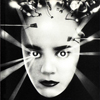
Top Ten: Weird, Wonderful And Wacky 80s Computer Games - The games that pushed the boundaries of 8-bit home computers, in both technology and all out weirdness.
|

The Revolution Started Here: Beneath A Steel Sky - The "revolutionary" adventure game from a small software house in Hull, that went up against the big U.S. software houses, and kicked arse!
|

